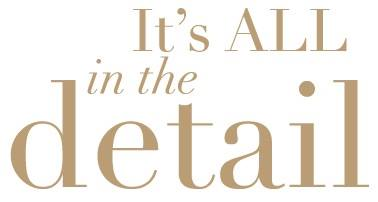Here's what you need to know about four main paint
finishes—flat, eggshell, semi-gloss, and gloss—and the best bets for where to
use them in your home.
Remember: There are no set rules for how certain paint colors
look in each finish; that decision is going to be totally up to you.
Flat Paint
Flat finish is also known as matte finish
and has the least amount of shine. Because it doesn't reflect light, it's the
best choice to hide any imperfections like bumps or small cracks on walls. It
also goes on smoother over rough surfaces, so it's a good option for textured
walls. Keep in mind, flat paint a little harder to keep clean, so it's not
recommended for high traffic areas like the kitchen or bathroom.
A Quick
Cheat Sheet
The Pros: Because it reflects little light, a flat finish is good for
concealing imperfections and has a classic old-world feel.
The Cons: Arguably the most delicate of the bunch, flat-finish paint is
difficult to clean and will show every scuff and fingerprint.
Where to use it: A low-traffic area, or on the ceiling.
Eggshell Paint
You can't really go wrong with eggshell
finish on your walls. Sometimes called satin finish, eggshell has slightly more
luster than a flat finish, but you won't be left with shiny walls. It also
resists stains better than flat and can be wiped with a wet rag. Eggshell
finishes are often used in bathrooms, kitchens, kids' rooms, and other
high-traffic areas.
A Quick
Cheat Sheet
The Pros: This has some of the low sheen qualities of a flat finish, but
is a bit easier to care for.
The Cons: It’s still difficult to clean and marks easily.
Where to use: Almost any room, barring kid-heavy zones.
Semi-Gloss Paint
Semi-gloss is tougher than eggshell, so it
will show less wear. It reflects even more light when dry, though, so if there
are any imperfections on your walls before you paint, they'll stand out.
Semi-gloss stands up the best to water and cleaning so it's a good choice for a
kids' bedroom or bathroom. This finish is also often used for trim, doors, and
furniture.
A Quick
Cheat Sheet
The Pros: Reflects a significant amount of light and is easy to clean.
The Cons: Reveals every imperfection in your walls, every brushstroke, and
the frequent “orange-peel finish” of a roller brush.
Where to use: It’s ideal for doors, trim, casework, bathrooms, and kitchens.
Make sure walls get a good skim coat first.
Gloss Paint
Reserve gloss paint for window and door
trim. It's also a great choice for furniture, because of its hard and shiny
finish. Want a glam look? Try using glossy paint on the walls!
A Quick
Cheat Sheet
The Pros: A spectacular finish in rooms that are flawlessly skim coated.
Less expensive than real lacquer (sometimes I can’t tell the difference).
The Cons: Expensive to execute well. This looks best lightly sanded
between coats, and often requires six or seven turns with the brush to achieve
an ideal, lacquer-like finish. The prices of the darker paint colors can be
shocking.
Where to use it: Rooms that beg for drama and need to be set apart with almost
special-occasion distinction, such as dining rooms, entry halls, powder rooms,
and libraries.
Oil-Based Paint vs. Latex-Based Paint
Alkyd (oil-based) and latex paint aren't
finishes. Rather, these terms refer to what makes up the paint product: oil or
water.
For most interior paint projects, latex—or water-based paint—is
ideal. Latex dries quickly, cleans up easily with water, and doesn't have a
strong odor.
Alkyd—or oil-based paint—dries slower and
give off a strong smell. The plus to using alkyd paint is that it provides a
smoother, almost hard enamel-like finish that resists scratching, fingerprints,
and stains. This type of paint tends to stick to its surface better, so it's a
good choice for rougher surfaces, furniture, and even floors.
When to Use Primer
For the best finish, always start with a
coat of primer, which preps new and old surfaces for paint. Back in the day, DIYers needed to be
careful about not mixing oil-based paints and latex primers (and vice versa).
But many primers today allow you to cover whatever the existing finish is as
long as you prep the surface first. Talk to your paint sales associate to make
sure the primer you buy will work.
NOTE: If you're painting over a bold color, ask the folks at the
paint store to tint the primer so it matches your new paint color. You'll get
much better coverage.



.jpg)




































![ivy topiary grouping[8] ivy topiary grouping[8]](https://blogger.googleusercontent.com/img/b/R29vZ2xl/AVvXsEhtT2Y9l6Ic15rOhbCkXn6ZIrPVp4w1nhg2y5oHBz8qjKObR4B1qDyA-5Wh9SpFnRZ9QctHJJBNkaY2aq03OqnDzdSZPksOjJ229yOaSgO1khfeSFCgw9Wf15fvnkAprX5hp99En16IAI-E/?imgmax=800)





